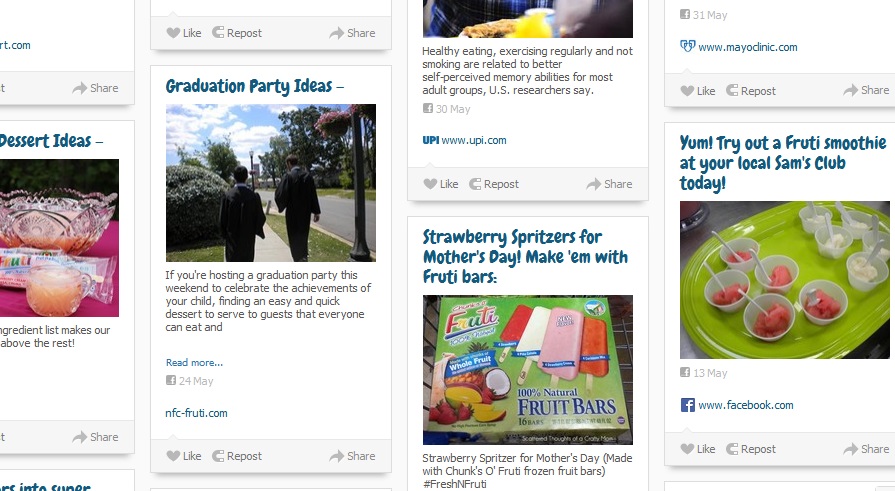We set up a couple of lab sites a couple of years ago. At one, we did nothing but add great content every weekday. We did an initial linkbuilding campaign and a little social media, but our main strategy was new, original content every day. At the other, we wrote up a dozen pages of good content and then left it alone.
In its sixth month after launch, the original content rich site had 8,132 visitors. The ignored site had 6 visitors in its sixth month.
It’s clear that good, original, regularly posted content is worthwhile. Posting once a day is great and posting three times a day is probably better. What if you don’t have the resources to do that, though? Can curating other content do the trick instead?
Curating content definitely has value. People are busy and the amount of information available to us is huge. We know we need to keep up, but we sure don’t have time to read everything. Having someone who will read it all and sort the wheat from the chaff is a time saver. If that person does a good job, we’ll follow them and pay attention to what they say. If they’ll digest it for us and let us skim their stuff or even just read the headlines and feel up to date, that’s even more valuable. A little well thought out commentary, and they’re a major resource. From the point of view of the search engines, this isn’t as good as original high quality content, but it can certainly be valuable to our customers and clients.
How and where should you curate content if you want that to be an effective part of your online presence?
At your website
Since other people’s stuff on your website is not good for SEO, there’s no benefit to having it at your website. Posting other people’s articles can get you in big trouble for duplicate content, in fact. Not to mention plagiarism.
If you want to use your website to curate content, there are a few good ways to do it:
- Post videos and infographics. You can embed other people’s videos and write original text about them at your website without any appearance of duplicate content. Make sure that you’re embedding content people are willing to allow you to use, of course.
- Embed a news feed. We’ve built several sites with this feature. You can bring an appropriate news feed into your website without creating duplicate content. Choose well so visitors will feel that this feed adds value to your website.
- Embed your Twitter feed. See the discussion below on how to curate content in your social media, and then bring it in to your website.
In social media
If you produce enough fresh original content to post links only to your own new stuff several times a day, that’s fine. Add conversation and participation in discussions taking place in the community and you have effective participation with all original content. Google+ in particular will reward you for posting original content in addition to links to your site, but this is also beneficial at Facebook and LinkedIn.
If you don’t have the resources to accomplish this, social media platforms are great places to curate content. People go to Facebook to hang out with friends and family, but many people use Twitter and LinkedIn primarily as a quick way to keep up with industry news. Pinterest is a source of inspiration for consumers and professionals, and many people use it specifically for shopping ideas. YouTube does a little of all those things. Effective content curation on any of these platforms can give you presence as a thought leader.
Link to good content and make effective comments or provide handy summaries or evaluations. Do it on a regular basis. That’s all it takes.
On content curation platforms
There are plenty of places online that are designed specifically for content curation. Spoke and RebelMouse are my current favorites, but we’ve also used Storify.com and Paper.li, and you can find a nice long list at YouBrand.
The example at the top is a Rebel Mouse page we built for the Natural Fruit Corporation. We fed their Twitter and Pinterest accounts to it, as well as posting from their blog and product pages. This page provides an attractive way for the company’s target markets to browse through tips and ideas, some of which are at NFC’s website and some of which are elsewhere.
The result is a feeling that NFC is a good source of information the visitors care about. Visitors who feel that NFC is an expert, reliable source for information about things like gluten-free snacks or low-calorie desserts, as well as trends in kids’ nutrition and food activism will notice their products on the shelf and feel good about buying them.


Leave a Reply